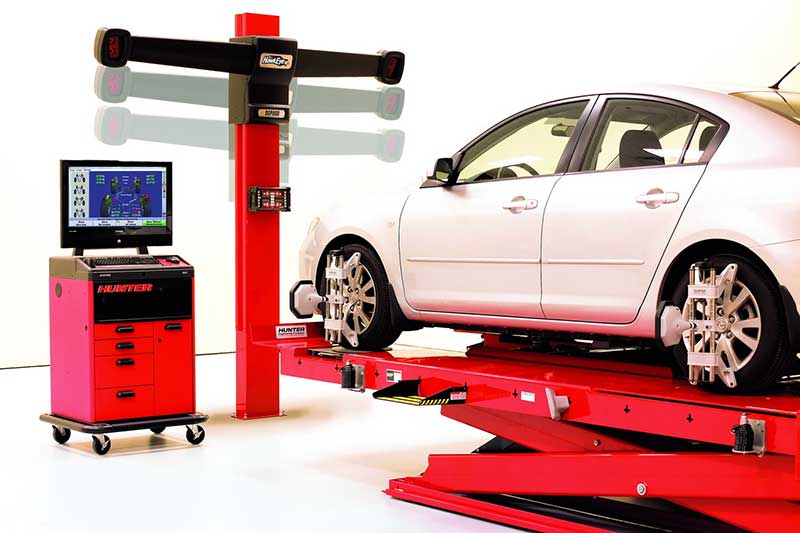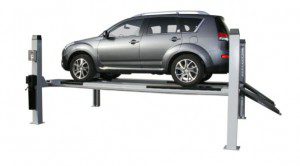
Vehicle Geometry - Wheels
Content
 Wheel geometry is one of the most important parameters affecting driving, tire wear, driving comfort and fuel consumption. Its correct setting will significantly affect the driving performance of the vehicle, as well as its handling. The main requirement is that the wheels roll, but do not slip when cornering or in a straight line. The geometry must be correctly set on all wheels of the vehicle, not just the steered axle.
Wheel geometry is one of the most important parameters affecting driving, tire wear, driving comfort and fuel consumption. Its correct setting will significantly affect the driving performance of the vehicle, as well as its handling. The main requirement is that the wheels roll, but do not slip when cornering or in a straight line. The geometry must be correctly set on all wheels of the vehicle, not just the steered axle.
Controllability of a vehicle is the ability to safely and as quickly as possible go around a turn along a given trajectory. Changing the direction of the car can be controlled by turning the wheels. The wheels of road vehicles should not slip when cornering, but should roll to transfer as much directional and circumferential force as possible. To fulfill this condition, the deviations of the wheel from the direction must be equal to zero. This is the Ackerman steering geometry. This means that the extended axes of rotation of all wheels intersect at one point lying on the axis of the rear fixed axle. This also gives the radii of rotation of the individual wheels. In practice, this means that with a steered axle, when the wheels are turned in the desired direction, there is a different steering angle of the wheels due to unequal wheel paths. During operation, the wheels roll on circular tracks. The turning angle of the inner guide wheel must be greater than the turning angle of the outer wheel. The geometry of a common intersection is important in the practical determination of the differential, the difference in the angles of change in the toe of the wheels. This difference angle must be the same in both steering positions when the wheels are turning in the direction, i.e. when turning right and left.
 Steering axle geometry equation: cotg β1 – cotg β2 = B / L, where B is the distance between the longitudinal axes of the hinges, L is the wheelbase.
Steering axle geometry equation: cotg β1 – cotg β2 = B / L, where B is the distance between the longitudinal axes of the hinges, L is the wheelbase.
Geometric elements affect the safe handling of the vehicle, its driving characteristics, tire wear, fuel consumption, suspension and wheel attachment, steering gear and mechanical wear. With an appropriate selection of parameters, a state is achieved in which the steering is stable, the steering forces acting on the steering wheel are small, the wear of all components is minimal, the axle load is unidirectional, and the steering play is determined. The axle bearing design includes a number of elements that improve chassis dynamics and enhance driving comfort and a safe driving experience. Basically, this is the displacement of the axle of the bridge, the convergence of the rear axle, its flying nozzle, etc.
The steering geometry is greatly influenced by the characteristics of the vehicle's chassis, the suspension characteristics and the properties of the tires, which create force contact between the vehicle and the road. Many cars today have customized rear axle geometry settings, but even for non-adjustable vehicles, adjusting the geometry of all four wheels will allow the technician to detect any rear axle track problems and correct them by adjusting the front axle. Two-wheel alignment, which only adjusts the geometry of the front wheels in relation to the axle of the vehicle, is obsolete and is no longer used.
Symptoms of improper steering geometry
Incorrect adjustment of the wheel geometry leads to a deterioration in the technical condition of the car and is manifested by the following symptoms:
- tire wear
- poor control properties
- instability of the controlled direction of movement of the vehicle
- vibration of control device parts
- increased wear of individual steering parts and steering deviation
- inability to return the wheels in a forward direction
The best wheel alignment for a car is to adjust all four wheels. With this type of geometry setting, the technician installs an indicating device on all four wheels and measures the geometry on all four wheels.
The procedure for measuring individual parameters of the vehicle geometry
- checking and adjusting the prescribed vehicle height
- measurement of the differential angle at a given control angle of rotation of one of the steered wheels
- wheel deflection angle measurement
- convergence measurement
- measuring the angle of rotation of the stub axle
- measurement of the angle of inclination of the kingpin
- wheel thrust measurement
- measurement of parallelism of axes
- measurement of mechanical play in steering

pages: 1 2
